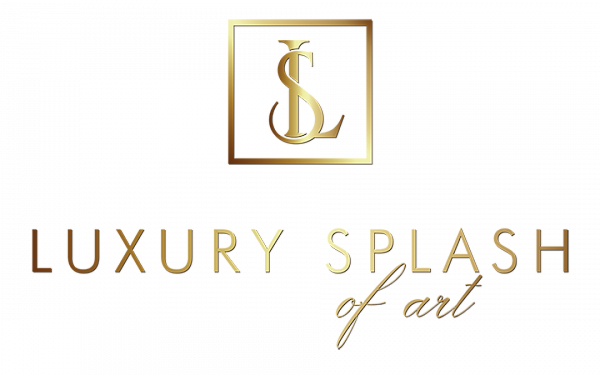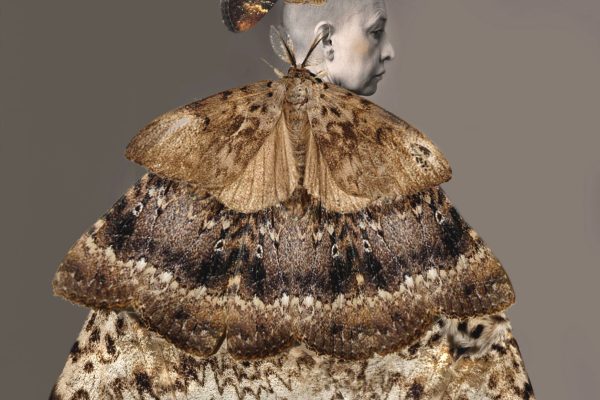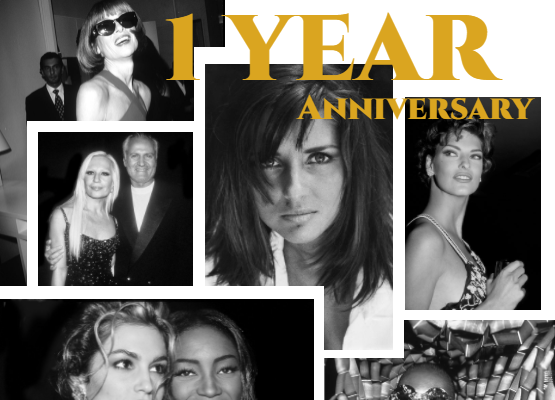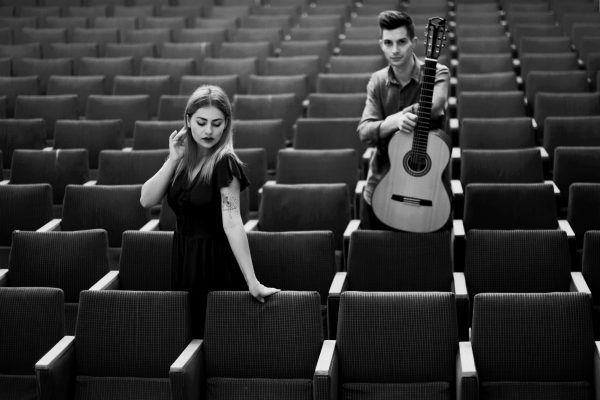She was a strange sight in apartheid South Africa. A young white girl running past fires in the countryside, hurtling over rocks to avoid a squawking rooster. A gold miner’s daughter, the 7-year-old was determined to reach a creek alongside her girlfriend’s house. Ignoring warnings from workers in the field, she’d dig for clay, shape it, and light her own fire.“The crackling noises from the wood, feeling the intense heat, I loved the fire, the different colors streaming from the flames,” recalls Estella Fransbergen, standing next to a one-sided highly-polished bronze torso in her Welaka, Florida studio. Once the “tomboy” working with clay, she now transforms bronze, glass and hemp into minutely-detailed female sculptures embellished with sparkling diamonds, copper wires and Swarovski Crystals.
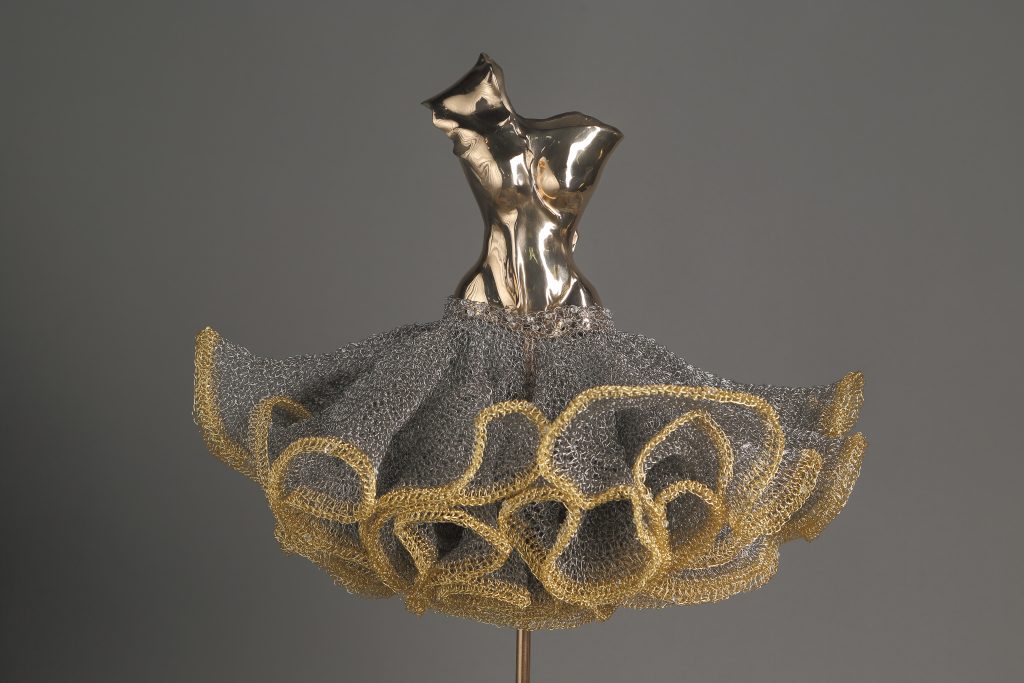
“Fire is spiritual. Now I work with stones and wires, but when I fire two large pieces of clay in an open blaze, I’m creating a union between them in an imperfect world. I have a deep connection with sculptures, but some force higher than me is doing the work. The fire, that force, is unpredictable…I like having no control.”The rebellious, free-spirited daughter of a South African gold miner, she moved with her parents to the Netherlands in 1977. She quickly questioned “all the rules there.”“I wanted to be an artist, my father insisted I become a nurse,” she explains, ruefully. Fransbergen chafed at that idea, and went to the United States, becoming an au pair girl in Miami, Florida. Savoring her new environment, she temporarily lost interest in art, and after getting married (1985), worked at her husband’s aquarium business. Surrounded by exotic, wondrously-colored fish, she felt inspired to acquire a potter’s wheel. Along with making tea pots, she experimented with free form pieces.
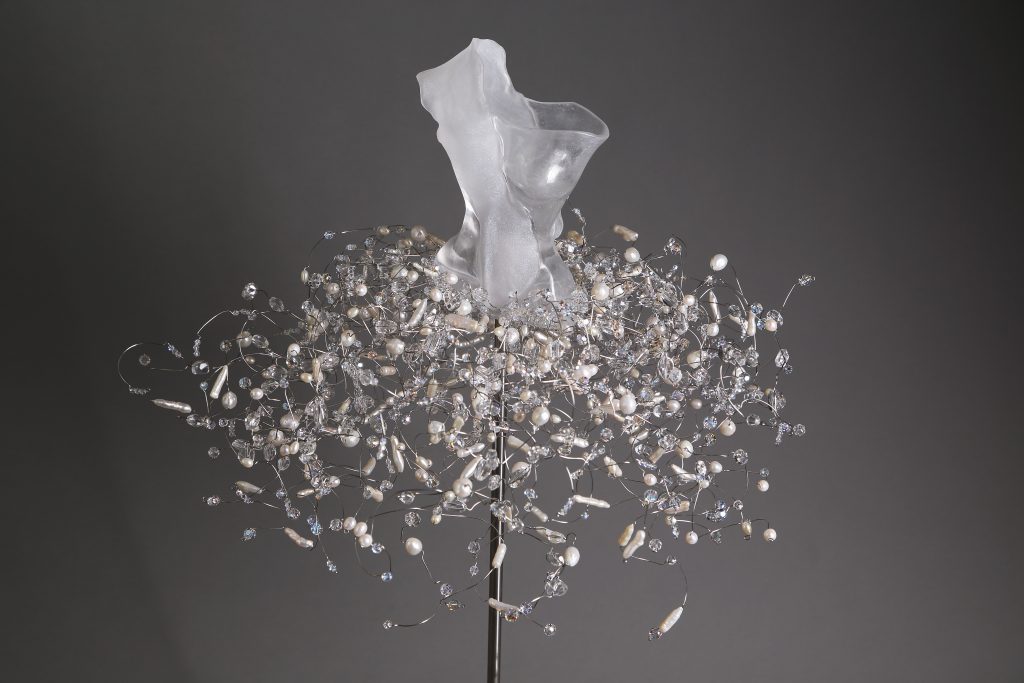
“I was insecure, but I sculptured a 3D wall piece. Which was well received in a high-end Miami shopping center exhibition,” says Fransbergen, who subsequently returned to Johannesburg and managed an accounting department at an IT firm. “That show was important, it inspired me.”But she was “miserable” in South Africa. Race relations grew increasingly tense after Nelson Mandela promised an era of “Reconciliation,” and she often heard of friends being robbed, or hijacked, at gunpoint. Living in a gated community, she’d again dangerously roam in the countryside, taking photos of the flowers and wildlife. “I was told I was crazy,” she laughs, “I just don’t do well behind locked doors.”
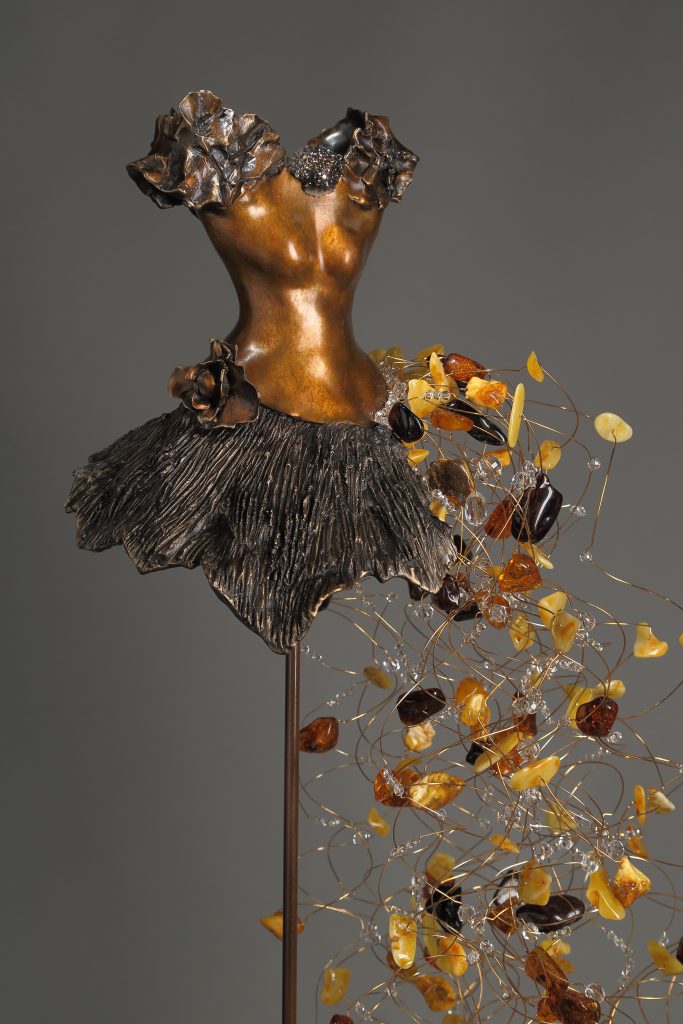
Unable to escape the country’s stifling tensions, and dissatisfied at work, Fransbergen returned to the US in 1999. She dove back into sculpting. Finding inspiration in dreams and Nature, she tried new techniques with glazes, gold, Herkimer Diamonds, and assorted stones. To gain greater exposure and recognition in the art world, she moved into bronze lost wax casting, and eventually enlivened her polished bronzes with a white patina and “embroidered” skirts with silver covered wires, electroplated leaves, and feathers. Bronze symbolizes strength to her. It resonates with women’s powers. Yet recognizing her “stinky girl” torsos must radiate fragility, a patina conveying eroticism and energy, Fransbergen again relies on the uncertainty of fire.
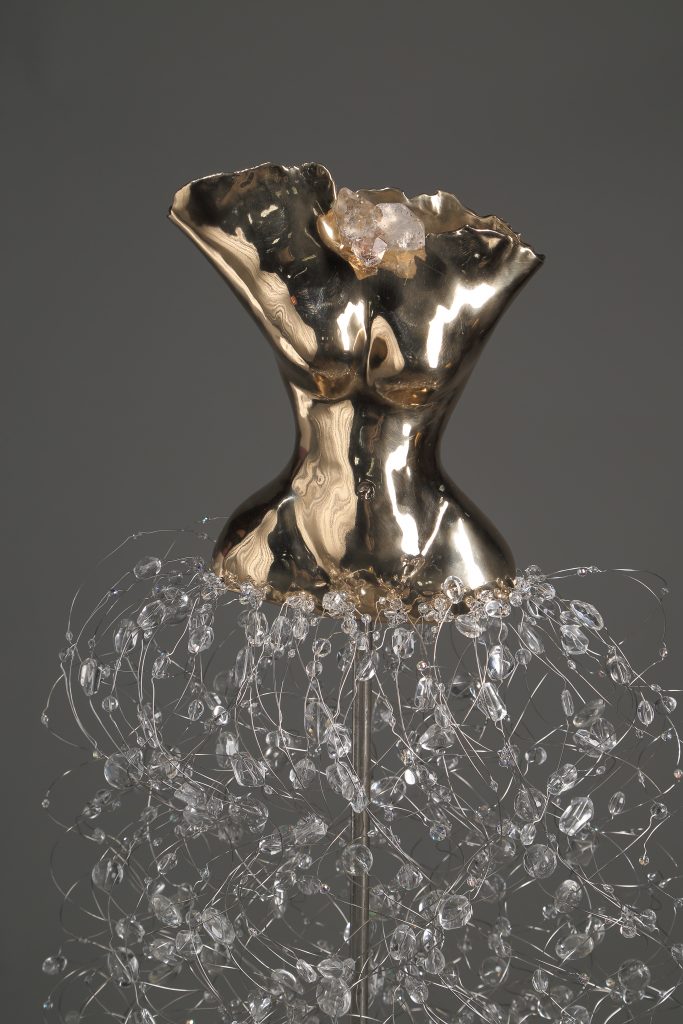
Admitting she gravitates towards “the primitive, the smells of her South African roots,” Fransbergen says, “when I want a gold-colored patina, the piece to look antiquey, I sawdust fire the clay torso that has a gold overglaze. Instead of using a kiln, I light coals in a metal drum. The coals smolder…stink for two to three days…and that firing actually paints the colors on the torso.”Emphasizing the physical demands of lifting coals, glass and bronze, Fransbergen trusts fire’s spiritual powers to animate her girls (ranging from 27 inches high to a towering 75 inches). She insists “I’m not aware of what I am doing. I have no plan. A tors may come from a dream…what I am feeling at the moment. I just want these pieces to somehow come alive.”
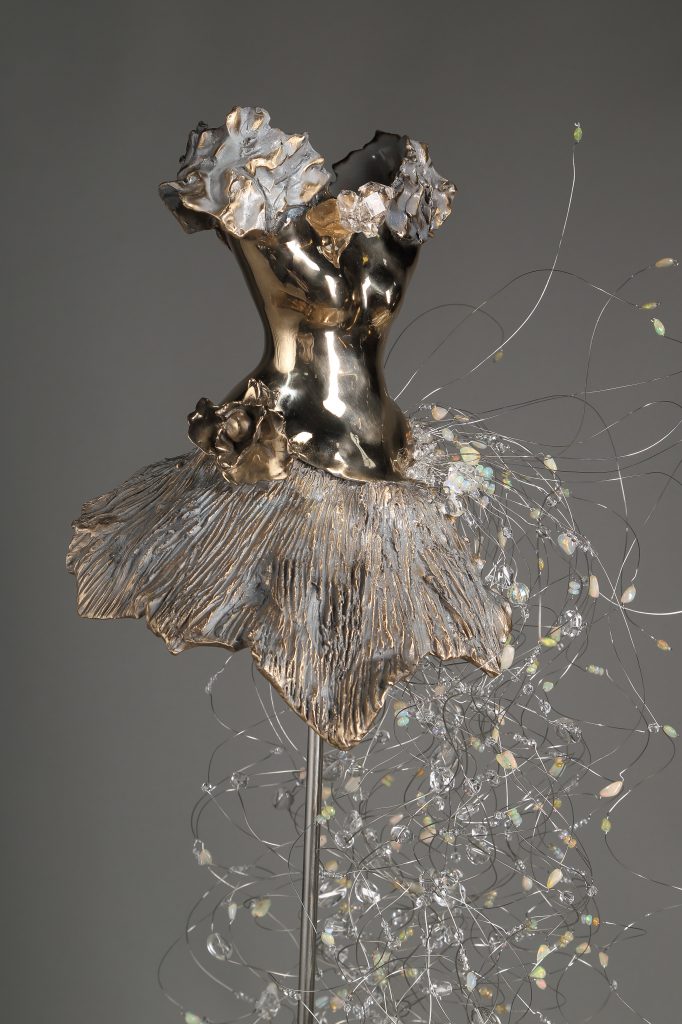
Yet the femininity expressed in these elaborate, fanciful-skirted women is not mere happenstance. Their grace, illumination, and seductive charm emerge from Fransbergen’s crocheting, how she embroiders swirling whirlwinds of Ethiopian opals, wispy, gold-colored wires, and amethyst stones. Explaining the delicacy that’s needed to create flowing skirts, she says, “my hands are everything. They have a spirit, maybe a 6th sense. I’m really painting with them…I have a needle-nose pliers that does the bending of the wires. I crimp them to prevent the stones from sliding…it’s really organized chaos. I just do it…abstract painting.”
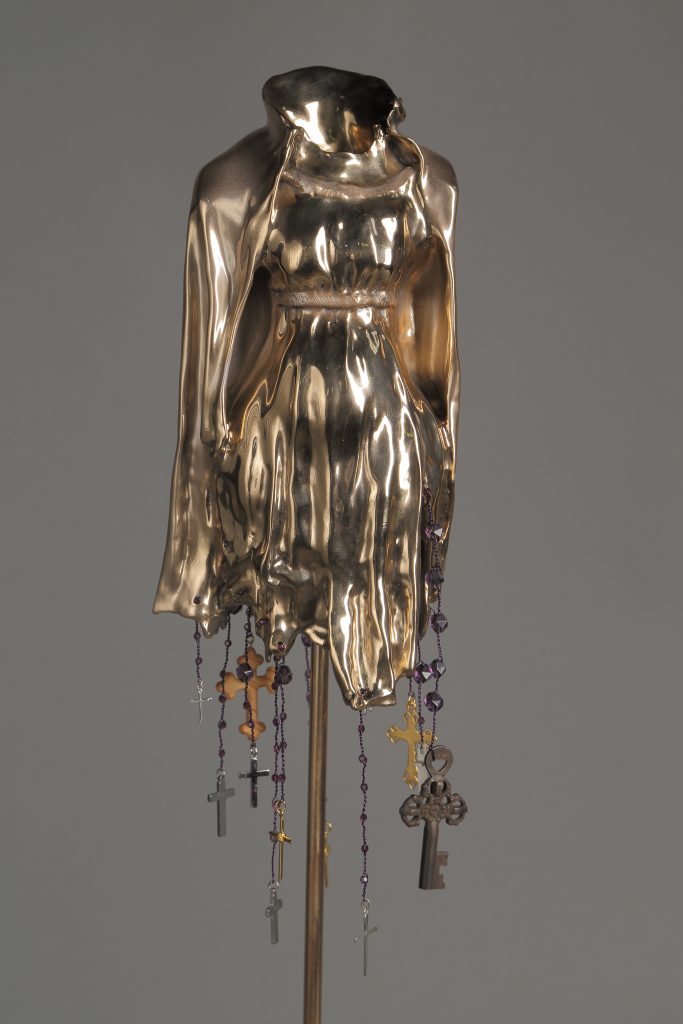
Recalling being inspired by lace seen in Bruges, Belgium, Fransbergen continues, “the intricacy was very impressive. I did crocheting as a child, and some of my works demand over 3500 feet of wiring. Now I want to perfect Bobbin lace making (twisting and braiding thread). I just need to find the patience.”Other influences have shaped her recent work. The Dali Gypsy Series featuring an unraveling sphere triggered thoughts of replicating that movement. One “irreverent” piece inspired by the Bible, depicts a bronze-cloaked, 5-month pregnant Virgin Mary carrying the Key to Life (59 Swarovski crystals represent rosary beads).
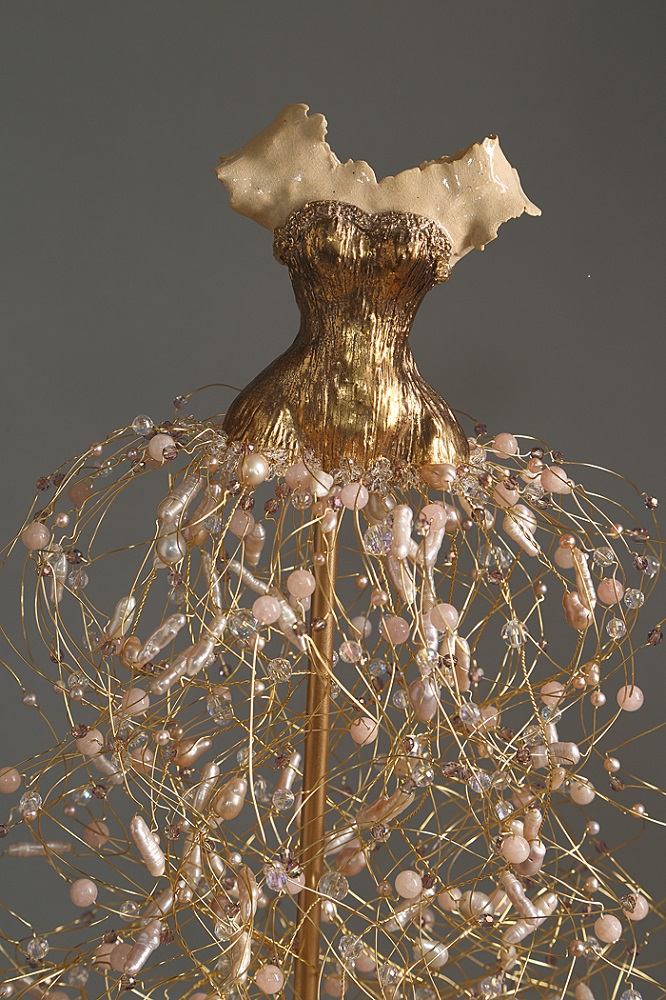
Releasing the emotions in that work, and in numerous glass-casted torsos with finely-sewn crystal skirts, has not always been easy for Fransbergen. “I’ve had to learn how to let go,” she exclaims, walking towards a barn where her husband Michael Anthony crafts wooden boats.“Now I’m totally fused with my torsos. I get into a meditative state, into a different world. One which is given energy from the stones I use. The energy in amber, for instance, is a healing energy. That is needed now, positivity.”Asked how her girls can restore light to these troubled times, Fransbergen doesn’t hesitate.“My father Paul found gold, and gave life to an element. That is what I am doing, my torsos are coming out of the earth. It’s magical…I am giving life to my girls.”
Written by Edward Kiersh
https://www.artsy.net/artist/estella-fransbergen
